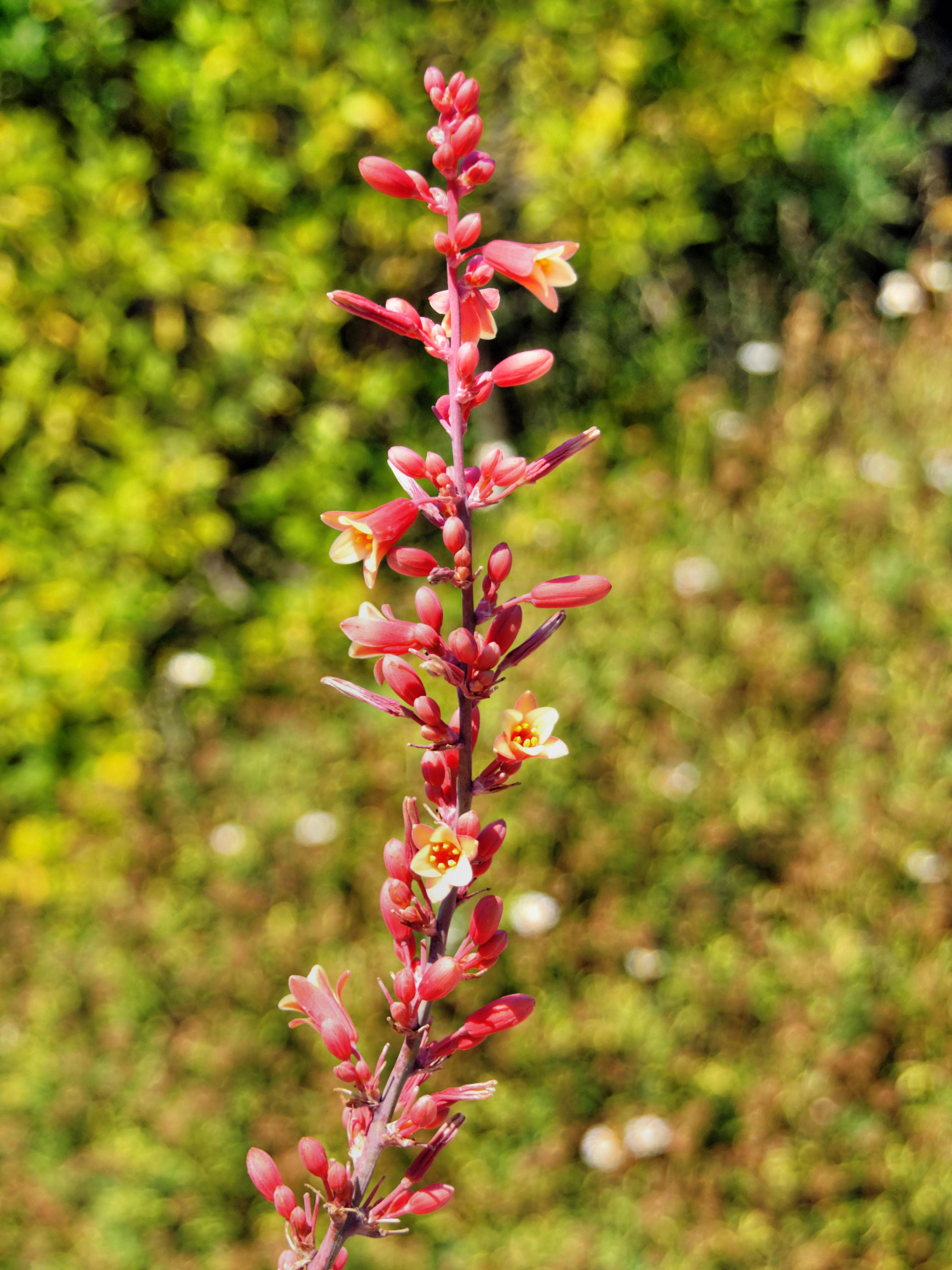Hesperaloe Parviflora on:
[Wikipedia]
[Google]
[Amazon]
 ''Hesperaloe parviflora'', also known as red yucca, hummingbird yucca, redflower false yucca and samandoque, is a
''Hesperaloe parviflora'', also known as red yucca, hummingbird yucca, redflower false yucca and samandoque, is a
San Marcos
 ''Hesperaloe parviflora'', also known as red yucca, hummingbird yucca, redflower false yucca and samandoque, is a
''Hesperaloe parviflora'', also known as red yucca, hummingbird yucca, redflower false yucca and samandoque, is a plant
Plants are predominantly photosynthetic eukaryotes of the kingdom Plantae. Historically, the plant kingdom encompassed all living things that were not animals, and included algae and fungi; however, all current definitions of Plantae exclud ...
that is native to Chihuahuan desert
The Chihuahuan Desert ( es, Desierto de Chihuahua, ) is a desert ecoregion designation covering parts of northern Mexico and the southwestern United States. It occupies much of far West Texas, the middle to lower Rio Grande Valley and the lower P ...
of west Texas
Texas (, ; Spanish language, Spanish: ''Texas'', ''Tejas'') is a state in the South Central United States, South Central region of the United States. At 268,596 square miles (695,662 km2), and with more than 29.1 million residents in 2 ...
east and south into central and south Texas and northeastern Mexico
Mexico (Spanish: México), officially the United Mexican States, is a country in the southern portion of North America. It is bordered to the north by the United States; to the south and west by the Pacific Ocean; to the southeast by Guatema ...
around Coahuila
Coahuila (), formally Coahuila de Zaragoza (), officially the Free and Sovereign State of Coahuila de Zaragoza ( es, Estado Libre y Soberano de Coahuila de Zaragoza), is one of the 32 states of Mexico.
Coahuila borders the Mexican states of N ...
.
''Hesperaloe parviflora'' has narrow evergreen leaves
A leaf (plural, : leaves) is any of the principal appendages of a vascular plant plant stem, stem, usually borne laterally aboveground and specialized for photosynthesis. Leaves are collectively called foliage, as in "autumn foliage", wh ...
with a fringe of white threadlike hairs along their edges and grows in clumps high and wide. Red or yellow tubular flower
A flower, sometimes known as a bloom or blossom, is the reproductive structure found in flowering plants (plants of the division Angiospermae). The biological function of a flower is to facilitate reproduction, usually by providing a mechani ...
s are borne on branching flower stalks (inflorescence
An inflorescence is a group or cluster of flowers arranged on a stem that is composed of a main branch or a complicated arrangement of branches. Morphologically, it is the modified part of the shoot of seed plants where flowers are formed o ...
s) up to tall from late spring to mid-summer.
The Latin specific epithet
In taxonomy, binomial nomenclature ("two-term naming system"), also called nomenclature ("two-name naming system") or binary nomenclature, is a formal system of naming species of living things by giving each a name composed of two parts, bot ...
''parviflora'' means "with small flowers".
This species has become popular in xeriscape
Xeriscaping is the process of landscaping, or gardening, that reduces or eliminates the need for irrigation. It is promoted in regions that do not have accessible, plentiful, or reliable supplies of fresh water and has gained acceptance in other ...
landscape
A landscape is the visible features of an area of land, its landforms, and how they integrate with natural or man-made features, often considered in terms of their aesthetic appeal.''New Oxford American Dictionary''. A landscape includes the ...
design for public and private garden
A garden is a planned space, usually outdoors, set aside for the cultivation, display, and enjoyment of plants and other forms of nature. The single feature identifying even the wildest wild garden is ''control''. The garden can incorporate both ...
s in California
California is a U.S. state, state in the Western United States, located along the West Coast of the United States, Pacific Coast. With nearly 39.2million residents across a total area of approximately , it is the List of states and territori ...
and the Southwestern United States
The Southwestern United States, also known as the American Southwest or simply the Southwest, is a geographic and cultural region of the United States that generally includes Arizona, New Mexico, and adjacent portions of California, Colorado, Ne ...
.
The plant's qualities include drought tolerance
Drought tolerance is the ability to which a plant maintains its biomass production during arid or drought conditions. Some plants are naturally adapted to dry conditions'','' surviving with protection mechanisms such as desiccation tolerance, detox ...
, heat resistance, low maintenance needs, hummingbird
Hummingbirds are birds native to the Americas and comprise the biological family Trochilidae. With about 361 species and 113 genera, they occur from Alaska to Tierra del Fuego, but the vast majority of the species are found in the tropics aro ...
attracting flowers, and an architectural form. It also is a spineless alternative to ''Agave
''Agave'' (; ; ) is a genus of monocots native to the hot and arid regions of the Americas and the Caribbean, although some ''Agave'' species are also native to tropical areas of North America, such as Mexico. The genus is primarily known for ...
'' and ''Yucca
''Yucca'' is a genus of perennial shrubs and trees in the family Asparagaceae, subfamily Agavoideae. Its 40–50 species are notable for their rosettes of evergreen, tough, sword-shaped leaves and large terminal panicles of white or whitish flo ...
'' horticultural species.San Marcos
References
External links
* * Agavoideae Flora of the Chihuahuan Desert Flora of Coahuila Flora of Texas Plants described in 1894 Taxa named by John Merle Coulter Garden plants of North America Bird food plants Drought-tolerant plants {{Asparagaceae-stub